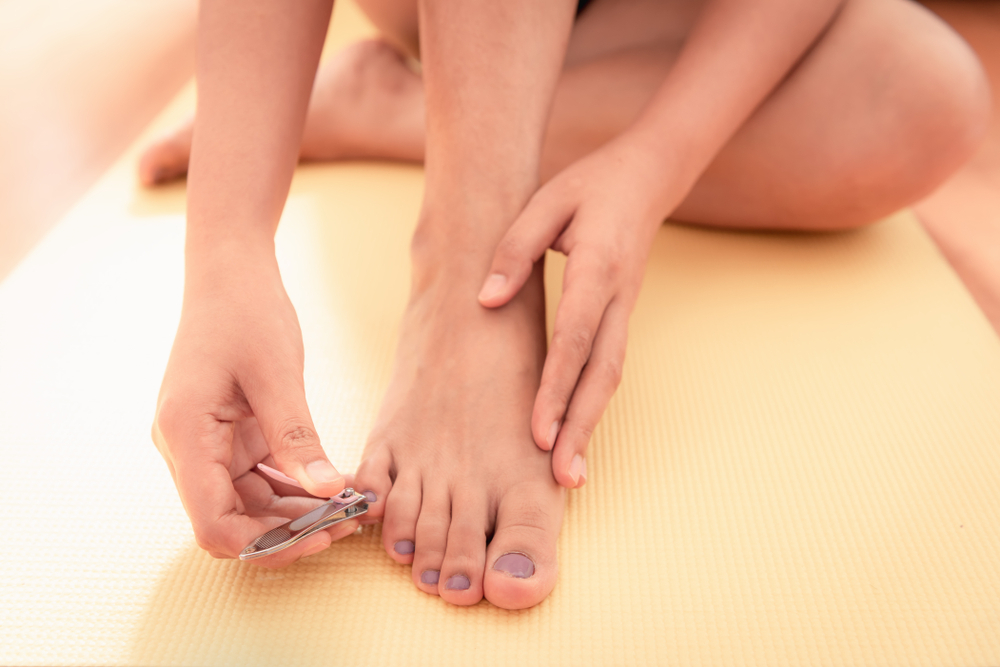Cutting toenails has to be learned. Nails that are too long, too short or incorrectly cut can have painful consequences. We show you how to do it right.
While we always care for our fingernails, toenails are quickly forgotten, especially in the winter months. Under thick woollen socks and winter boots, nobody sees the toenails anyway, but beware! The correct care of toenails is not only a question of a well-groomed appearance, but above all of health.
Especially the nail on the big toe is very sensitive to a wrong cut with unsuitable tools and grows in quickly. And an ingrown toenail is not only painful. The ingrowing can lead to unpleasant consequences up to nail bed inflammation. But don’t worry, not only professional nail care can cut toenails. With these tips and tricks, you can also have healthy and beautiful toenails in your own four walls at home.
Cutting toenails correctly: The preparation
When cutting toenails, the following applies: The correct preparation is essential. A warm footbath is essential to soften the hard toenails and calluses. Soft nails are easier to cut and cost you less effort, which reduces the risk of injury and thus also the risk of nail bed inflammation.
To do this, soak your feet in warm water with chamomile or aloe vera for about five minutes. Then dry your feet and toenails carefully and you can start cutting your toenails.
The right tool
Nail scissors, nail nippers, clippers, file – there are many tools for cutting nails, but which is the right one for toenails?
- For the robust and thick nails on the feet, especially on the big toe, a nail nipper is best suited. The powerful tool easily manages the stubborn nails.
- A nail clipper is also suitable. However, you should make sure that the clipper is suitable for toenails, i.e. that it is significantly larger than for the narrower fingernails.
- A conventional nail scissors, on the other hand, is better used only for your fingernails. They are too weak for toenails, can easily slip out of your hand, injure the sensitive nail bed and thus cause painful nail bed inflammation.
- For the pedicure a good nail file should not be missing. With the file you can file gently sharp edges smooth after cutting.
Shape and length
There are no limits to your imagination when it comes to manicure. Depending on your mood you can wear your fingernails round, square or pointed. But there is a clear rule for pedicures, which has been recommended by podiatrists for ages: Always cut your toenails straight!
- Never cut away the nail corners, but leave them free to rest on the lateral skin edge. In this way you avoid that your toenails grow in and protect yourself from inflammations and other diseases of the nail bed.
- Not too long and not too short: The nail edge should end with the tip of the toe to avoid pressure points or ingrown toenails in the shoe.
- Since the toes often rub against each other in everyday life, you should avoid sharp corners and edges that can drill into the skin and cause injury.
- Sharp edges can easily be smoothed carefully with a nail file. Always file the toenails in the direction of growth to protect the sensitive nail fibers and to avoid tearing the nails.
After cutting your toenails: The right care
After the toenails have been given the right cut, it is recommended to apply a rich cream to the skin of the feet and massage the toenails with a nail oil. This will make the calluses and nails smoother and will make your pedicure easier if used regularly. With these tips and tricks, a domestic pedicure is child’s play and ingrown toenails and the dreaded nail bed inflammation are a thing of the past.

